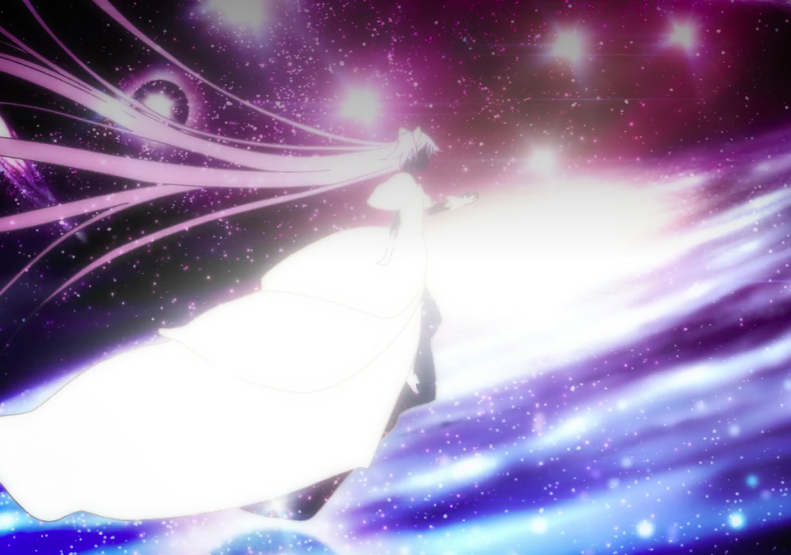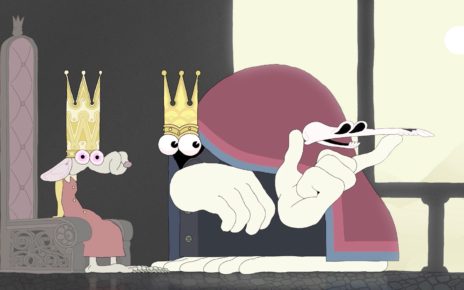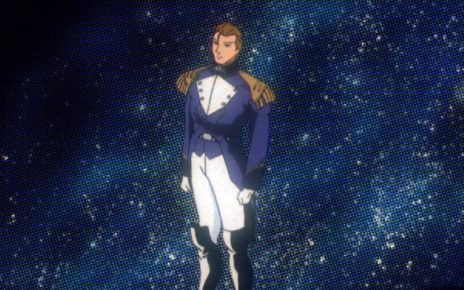This post contains spoilers for Puella Magi Madoka Magica.
Puella Magi Madoka Magica (Mahou Shoujo Madoka Magica in Japan) is a 12-episode anime released in 2011. It’s also a subversion of classic Magical Girl anime, like Sailor Moon or Cardcaptor Sakura, where teenage or pre-teen girls get magical powers and change into cute outfits during magical transformation sequences.
In Madoka, the eponymous character considers becoming a Magical Girl to fight witches, who are invisible to humans and cause natural disasters, suicidal ideation, and a general miasma of despair. In exchange for becoming Magical Girls, young women are offered a wish by Kyuubey, a deceptively adorable rabbit-cat creature whose smiling face becomes more sinister as the show goes on. Madoka’s friend Sayaka, upperclassmen Mami, and mysterious transfer student Homura all make contracts with Kyuubey, with Madoka being the last holdout.
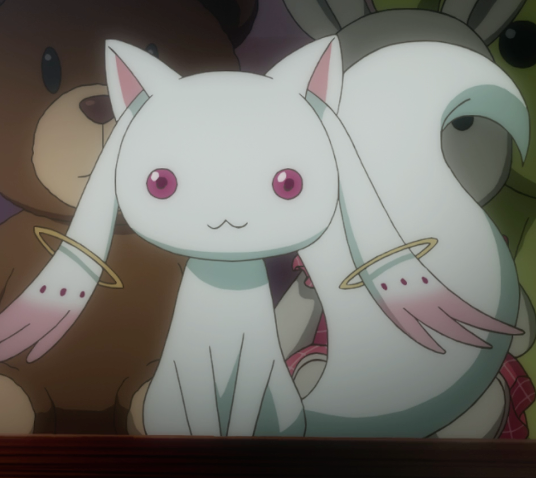
Unbeknownst to the girls, almost every part of this bargain is a deception. The girls receive beautiful gems, called Soul Gems, which are the source of their power. The gems are also their actual, literal souls ripped from their bodies, leaving them essentially as walking, fighting zombies. When they use too much energy from their Soul Gems they become tarnished, and when the gems are fully corrupted by despair, the Magical Girls become the very witches they’d been fighting. Finally, as is often the case in these stories, their wishes often backfire and make things worse for themselves or their loved ones than they were before.
But Madoka discovers she is able to change this. Kyuubey tells her that she has the most potential he’s ever seen and could become the most powerful Magical Girl who ever existed. She decides to go through with it and makes an incredible wish: to stop all witches from the past, present, and future from ever being born from Soul Gems. As Madoka begins her transformation into a Magical Girl after making a wish that will rewrite the laws that govern her reality, Kyuubey asks her, awestruck: “Do you truly intend to become a god?!”
While Madoka brushes the question off, it’s difficult to deny that she does become a god. That is to say, she becomes an ineffable, omnipresent force that guides the lives of all Magical Girls of the past, present and future. But there are many kinds of gods. Specifically, Madoka becomes a goddess of mercy, redemption, and death.
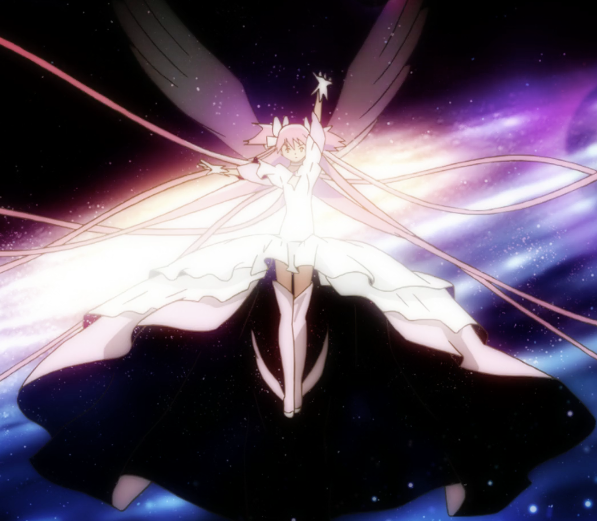
Madoka’s goal is to alleviate suffering. She doesn’t want Magical Girls to end their lives in a state of torturous despair, which they have up till now. This is consistent with what we’ve seen of Madoka since the very first scene in the series — all she wants is to help other Magical Girls, whether it’s Homura in a losing battle against the unbeatable witch Walpurgisnacht, Mami living an isolated and lonely existence, or Sayaka succumbing to despair. Her greatest regret, and the reason she first considers being a Magical Girl, is that she isn’t able to help with anything.
But it’s impossible to completely end the suffering of Magical Girls. No matter what, they will have their souls removed from their bodies and fight until they’re killed or turned into witches. Madoka, however, finds a way to remove the greatest sources of their suffering: fighting witches, and transforming into witches when their Soul Gems become tainted.
“I won’t let your prayers end in despair,” Madoka promises. Until Madoka makes her wish, all other wishes have indeed ended in horrible tragedy for those who made them. Either they die violent deaths or they live long enough to become witches and destroy as many lives as they’ve saved, or more. The latter fate is the cruelest option. The Magical Girls we’ve met make wishes to help others or save their own lives, and are prepared to fight witches indefinitely. Madoka finds it unacceptable that those altruistic and hopeful urges should end in the girls becoming monstrous parodies of themselves who only curse and kill others. Madoka redeems their wishes, acknowledging the value of their sacrifices and rejecting the idea that they were foolish to have hope in a better future. Madoka makes her viewpoint clear, saying: “If someone says it’s wrong to have hope, then I’ll tell them they’re wrong, every single time.”
Madoka’s final role is that of a goddess of death. As each Magical Girl throughout time and space is about to become a witch, Madoka appears before them, removes the corruption from their Soul Gem, and allows them to die. The look of relief and comfort on their faces indicates that Madoka has achieved her goal. “All those who have fought against witches, who believed in hope as Magical Girls — I don’t want to see them cry. I want them to be smiling to the very end.”


When the dust clears, Puella Magi Madoka Magica depicts the horror of an unjust universe where bad things happen to good people both intentionally and arbitrarily. But it also depicts a god who guides that universe and who rewrites the laws that have forced suffering on its denizens. Only Homura knows how much worse existence was for Magical Girls before, and perhaps to the others this new world seems arbitrary and cruel as well. But Madoka has given them these gifts: no witches to fight or to become, redemption and validation of their wishes, and comfort when they ultimately meet their deaths. She is not worshipped, but she is fighting for them. And she will continue fighting forever.
Thanks for reading The Dot and Line, where we talk about animation of all kinds. Don’t forget to for this article and follow us on Twitter and Facebook.


